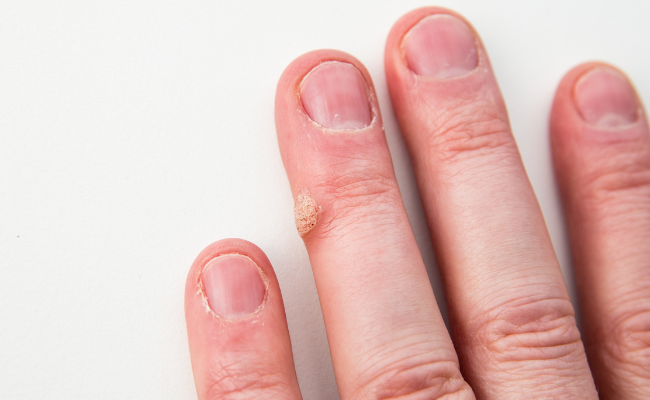How to Treat Scleroderma?
- November 08, 2023
- No Comments

What is Scleroderma?
Scleroderma, whether viewed as a chronic autoimmune disease or a rare condition, poses a significant challenge by causing abnormal thickening and hardening of the body's connective tissues. The overproduction of collagen affects the skin, blood vessels, and internal organs.
Scleroderma triggers abnormal tissue production, predominantly affecting the skin while potentially manifesting symptoms in various tissues throughout the body. As an autoimmune disorder, it occurs when the immune system mistakenly attacks the body, treating its own tissues as threats rather than allies and leading to characteristic tissue thickening.
Why Does Scleroderma Occur?
The precise cause of scleroderma remains elusive, but a combination of genetic, environmental, and immune system factors is believed to contribute to its development. An abnormal immune system response prompts the excessive production of collagen, resulting in the characteristic thickening and hardening of tissues. Environmental triggers and genetic predispositions may act as catalysts for initiating this immune response, highlighting the multifaceted nature of scleroderma's origins.
How to Identify Scleroderma Symptoms?
Scleroderma manifests with a diverse array of symptoms, and its impact can vary from person to person. Recognizable symptoms include thickening and tightening of the skin, particularly on the fingers and face, a phenomenon known as Raynaud's Phenomenon which causes color changes in extremities, gastrointestinal issues, joint pain, shortness of breath due to lung complications, and persistent fatigue. Identifying these symptoms is crucial for early intervention and effective management of the condition.
How to Treat Scleroderma?
Addressing scleroderma involves a multifaceted approach, combining various treatment modalities tailored to the specific symptoms and manifestations of the individual. Key treatment strategies include:
- Medications: Immunosuppressants drugs work to suppress the overactive immune response, slowing down the progression of scleroderma.Nonsteroidal anti-inflammatory drugs (NSAIDs) may be prescribed to alleviate joint and muscle pain.
- Physical Therapy: Incorporating physical therapy exercises into the treatment plan helps maintain joint flexibility and prevents muscle tightening.Specific breathing exercises are beneficial for individuals with lung involvement, promoting respiratory health.
- Skin Care: Prioritizing regular moisturizing routines helps manage the dry skin commonly associated with scleroderma.Opting for mild, fragrance-free products and avoiding harsh soaps is essential for skin health.
- Raynaud's Phenomenon Management: Practicing preventive measures such as keeping hands and feet warm, especially in cold weather.Medications aimed at improving blood flow and managing symptoms related to Raynaud's Phenomenon.
- Gastrointestinal Symptom Management: Implementing dietary adjustments, including smaller and more frequent meals, to ease digestive discomfort.Prescribing medications to manage acid reflux and other gastrointestinal issues.
- Lung Treatment: Administering medications to improve lung function and alleviate respiratory symptoms.Considering oxygen therapy for those with advanced lung complications.
- Surgery: In severe cases, surgical interventions may be explored, including joint replacement or, in extreme cases, lung transplantation.
- Clinical Trials: Participation in clinical trials offers potential access to innovative treatments, contributing to the advancement of scleroderma research.
Benefit Points of Treating Scleroderma:
- Symptom Relief: Effective treatment provides relief from symptoms such as skin tightness, joint pain, and gastrointestinal discomfort.
- Improved Quality of Life: Managing scleroderma symptoms enhances overall well-being, allowing individuals to lead more fulfilling lives despite the challenges posed by the condition.
- Prevention of Complications: Timely and appropriate intervention helps prevent the progression of the disease, reducing the risk of complications affecting internal organs.
- Enhanced Mobility: Physical therapy and joint care contribute to improved mobility and flexibility, minimizing the impact on daily activities.
- Lung Health Preservation: Implementing lung treatments helps preserve respiratory function, reducing the risk of complications related to scleroderma-induced lung issues.
- Individualized Care: Tailored treatment plans consider the unique manifestations of scleroderma in each individual, ensuring personalized and effective care.
- Advancements in Research: Participation in clinical trials not only offers potential benefits to individuals but also contributes significantly to the progress of scleroderma research, paving the way for improved and more targeted treatment options.
Comments (0)